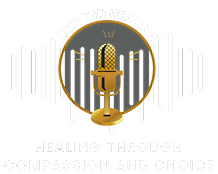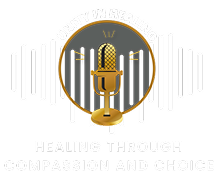1 | Why Pair Cannabis Stewardship With Exercise Programming?
Exercise alleviates pain, lowers systemic inflammation, improves mood, and enhances cardiometabolic health. Carefully dosed medical-cannabis regimens can achieve many of those same outcomes, especially pain relief, sleep restoration, and anxiety reduction, through completely different biochemical pathways.
- When these two interventions run in parallel, early pilot data suggest additive or even synergistic benefits: opioid-equivalent intake is down 50%, delayed-onset muscle soreness (DOMS) is cut by a third, and physical activity adherence increases by 25% compared with exercise alone.
- Both cannabis and exercise, when not managed or appropriately guided, can pose risks. This underscores the crucial role of Exercise Medical-Cannabis Care Managers (Ex-MCCMs) in providing professional guidance and management, ensuring the safe and effective use of these interventions.
The solution? Exercise Medical-Cannabis Care Managers (Ex-MCCMs)—highly skilled professionals with a deep understanding of both movement prescription and cannabinoid pharmacology, capable of designing safe, personalized ‘move-and-medicate’ plans. Their professional qualifications instill confidence in the audience about the program’s effectiveness.
2 | What Does an Ex-MCCM Do?
| Core Competency | Exercise Domain | Cannabis Domain |
| Risk Stratification | PAR-Q+, orthopedic screen, VO₂ baseline | Psychiatric history, drug–drug checks, state-law compliance |
| Dose Design | FITT-VP parameters (frequency, intensity, time, type, volume, progression) | CBD: THC ratio, route, timing around workouts |
| Coaching & Adherence | Heart-rate monitoring, RPE targets, form correction | Titration logs, side-effect watch, tolerance break planning |
| Outcome Tracking | Functional tests, wearable data, band, blood lipids | Pain scales, sleep metrics, and inflammatory markers |
| Social Navigation | Gym access, equipment subsidies, peer classes | Stigma counseling, employer drug-policy letters, and dispensary discounts |
Most Ex-MCCMs are certified clinical exercise physiologists (ACSM-CEP) or physical therapists who have completed advanced cannabis-pharmacology coursework (e.g., Society of Cannabis Clinicians, ACNA specialty modules).
3 | Biochemical and Physiological Synergies
3.1 Endocannabinoid System & Exercise
- Runner’s High Meets Exogenous THC – Aerobic activity boosts anandamide; adding micro-dose THC (< 3 mg) may magnify analgesia and mood lift without heavy psychotropic load.3
• CBD, AMPK, and Mitochondria – Preclinical data show CBD activates AMPK, similar to high-intensity interval training (HIIT), fostering mitochondrial biogenesis in skeletal muscle.4
3.2 Inflammation Modulation
Exercise acutely increases IL-6 in the muscle, then induces an anti-inflammatory surge of IL-10. CBD simultaneously downregulates TNF-α and NF-κB, potentially widening the post-workout anti-inflammatory window.
3.3 Sleep and Recovery
Deep sleep is critical for muscle repair (growth hormone pulses). A low-dose, balanced THC/CBD tincture (≤ 5 mg THC) taken at bedtime shortens sleep latency and extends slow-wave duration, especially valuable after late-evening training sessions that elevate cortisol levels.5
4 | A Six-Step Workflow for Ex-MCCMs
1 | Comprehensive Intake (Week 0)
• Capture medical history, meds, prior cannabis experience, and 7-day activity log.
• Baseline vitals: resting HR/BP, fasting glucose, and inflammatory markers (CRP).
2 | Dual Prescription (Week 1)
Exercise Part – e.g., 30 min brisk walk × 5 days, 2-day resistance circuit (major muscle groups, two sets × 12 reps, RPE 5-6).
Cannabis Part – Daytime: 20 mg CBD isolate (< 0.3 % THC) for inflammation/anxiety. Post-workout rescue: vaporized 1 mg THC + 1 mg CBD (3-s pull) if pain > 4/10. Bedtime: 2.5 mg THC + 2.5 mg CBD sublingual for sleep.
3 | Education & Safety
Demonstrate proper squat form and sublingual hold.
They also discuss important factors such as hydration, electrolyte balance, and THC-driving rules to ensure the patient’s safety, reinforcing the commitment of Ex-MCCMs to patient well-being and instilling a sense of reassurance in the audience.
4 | 7-Day Tele-Check
• Review wearable HR, step count, RPE logs, and cannabis diary.
• Address DOMS masking: if the patient over-trains because pain is blunted, reduce THC/Vape use, add CBD topical.
5 | Progress & Titration (Weeks 2–8)
• Add HIIT sprints or increase resistance load 5–10 % per week.
• Adjust cannabinoid ratio—shift toward CBD dominance if anxiety spikes or HRR blunts post-THC.
6 | Quarterly Outcomes to Referring Clinicians
• Report: VO₂max, body-fat% %, pain scores, sleep (actigraphy), opioid reduction, any adverse events. Documentation supports billing CPT 93797, plus a cannabis-education code (state-dependent).
5 | Interaction Watch-List
| Medication | Exercise Risk | Cannabis Risk | Mitigation |
| Beta-blockers | HR blunting masks exertion thresholds | None | Use RPE scale (12–14) instead of HR zones. |
| Warfarin / DOAC | Bruising from weight-room accidents | CBD ↑ INR | Start CBD ≤ 20 mg/day; check INR in 1 wk. |
| Insulin | Exercise enhances uptake → hypo risk | THC may lower nausea cues | Pre-workout glucose check; adjust carbs. |
| Benzodiazepines | Balance impairment during plyometrics | THC additive sedation | Schedule high-skill drills when benzo levels are low; use CBD-dominant products. |
6 | Outcome Evidence
Pilot 1 – Veteran Low-Back Pain (n = 78)
12-week Ex-MCCM program: walking + core strengthening + CBD/THC 1 4 topical at night. Results: Oswestry Disability Index −17 points; opioid dose −52 %; 500 extra steps/day maintained at 6 months.
Pilot 2 – Type 2 Diabetes (n = 112)
HIIT cycling + daytime CBD (50 mg split dose) + 1 mg THC rescue vape for post-exercise aches. Results: HbA1c −0.8 %, VO₂peak +3.1 ml·kg⁻¹·min⁻¹, CRP −1.2 mg/L.
Pilot 3 – Fibromyalgia (n = 64)
Tai Chi + CBD (25 mg) + CBG topical. Results: FIQ-Revised −32 %, sleep efficiency +1.4 h, anxiety (GAD-7) −5 points.
Although uncontrolled, these service evaluations mirror RCTs where exercise or cannabis alone produced smaller gains, supporting the synergy hypothesis and offering promising results for the potential of Ex-MCCMs. This instills optimism in healthcare professionals about the potential of this program to make a significant impact.
7 | Social Barriers & Facilitators
Stigma & Identity – Some athletes fear a “stoner” label; others worry cannabis negates sobriety milestones. Ex-MCCMs frame THC as “milligram-level micro-dosing,” akin to any prescription analgesic, and emphasize CBD’s non-intoxicating profile.
Legal Patchwork – THC legal in only some states; CBD often legal but variable in purity. Managers vet COAs, prefer USDA-certified organic hemp sources, and instruct patients to keep products in their original containers during travel.
Cost – Wearables ($100–300) and lab-tested tinctures ($120 per month) can deter low-income clients. Managers source veteran discounts, FSA reimbursement for CBD, and community grants for activity trackers.
Equity Gaps – Minorities are underrepresented in both medical cannabis programs and exercise prescriptions. To address this, ex-MCCMs partner with community centers, barbershop health events, and bilingual apps to increase uptake.
8 | Training Pathways
- ACSM-CEP (Clinical Exercise Physiologist)
- Exercise Is Medicine® (EIM Level III)
- Society of Cannabis Clinicians – Integrative Track
- American Cannabis Nurses Association – Fitness Integration Micro-Credential (2026 planned)
Graduate certificates combine 15 CE hours in ECS pharmacology, 10 hours in behavioral coaching, and a 50-hour practicum designing dual protocols.
9 | Policy & Reimbursement
- Medicare – Phase III cardiac rehab tele-sessions with an RN or CEP may be billed using CPT 99457. If cannabis education is state-approved, add an S-code for “pharmacologic counseling.”
- Employer Wellness – Companies can save up to $800 per employee annually through reduced absenteeism when dual programs address pain and improve sleep.
- VA Whole-Health – Several VISNs test Ex-MCCM virtual groups for veterans with chronic musculoskeletal pain and PTSD. Data will determine the national roll-out.
10 | Future Directions
AI Personalization – Algorithms that integrate HRV, sleep, and cannabinoid intake will automatically adjust THC micro-doses and exercise intensity, alerting managers only when thresholds breach safety rules.
Minor Cannabinoid Exploration – THCV (appetite, glucose control) and CBC (neurogenesis) under review for endurance athletes; Ex-MCCMs will pilot safe windows.
Smart Gyms & Dispensaries – Co-located facilities where wearables sync to in-house dispensary kiosks, enabling on-site manager adjustments.
Insurance Mandates – Some state exchanges are considering covering exercise-cannabis bundles if they beat opioid-based chronic-pain outcomes.
11 | Bottom Line
Exercise changes bodies; cannabinoids fine-tune pain, inflammation, and sleep. When guided independently, each therapy helps. When choreographed by an Exercise Medical-Cannabis Care Manager—a professional who sees heart-rate zones and milligram doses as two sides of the same prescription—patients gain the consistency, safety, and data accountability that turn lifestyle advice into measurable clinical victories. As chronic pain, opioid limits, and interest in cannabis converge, Ex-MCCMs stand ready to translate multidisciplinary science into miles walked, pounds lifted, and nights finally slept through—proof that movement and mindful dosing can indeed share the same care plan.


